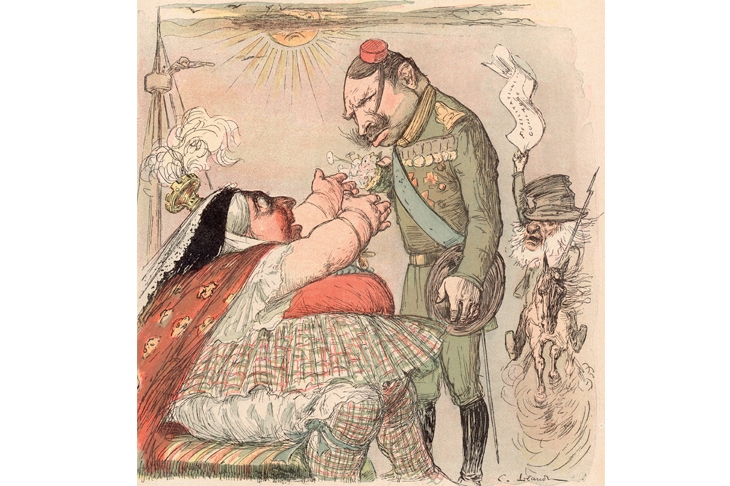In 2015 a pair of linen drawers belonging to Queen Victoria sold at auction for over £12,000. In old age Queen Victoria swathed herself in wraps and loose gowns which artfully concealed her figure, and her official photographers were ordered to photoshop her outline. But these knickers with their 45” waistband make plain that the 5’-queen was borderline obese. Annie Gray has written a culinary biography of Queen Victoria which tells us what she ate.
Breakfast was a hearty meal, often featuring lamb chops. For dinner Victoria ate rich French food, and her menus were always written in French. No plain Mrs Beeton-style cooking for the queen.
Dinner began with a choice of soups. One of these was a deceptively simple pale consommé, which involving a complex, labour-intensive process of clarifying veal stock with a paste of crushed eggshell and minced breastmeat. The next course was fish — turbot or whitebait were favourites — followed by an entrée of meat, often lamb chops again, or roast beef. Next came a roast, typically game, cooked on a spit. This was followed by vegetables, sourced from the royal kitchen gardens, pureed and creamed (all this was done by hard labour, pounding in a mortar and rubbing through a sieve). Finally came the entremets, a variety of sweet dishes such as meringues or profiteroles or jellies, elaborately moulded, piped and garnished. It’s hard to see how anyone remotely greedy could fail to get fat with a dinner like this every night.
In this wonderfully researched and entertaining book, Gray uncovers a slice of royal history which until now has been completely ignored. The palace kitchens were mass catering operations, feeding hundreds, not just the queen and the household.








Comments
Join the debate for just £1 a month
Be part of the conversation with other Spectator readers by getting your first three months for £3.
UNLOCK ACCESS Just £1 a monthAlready a subscriber? Log in